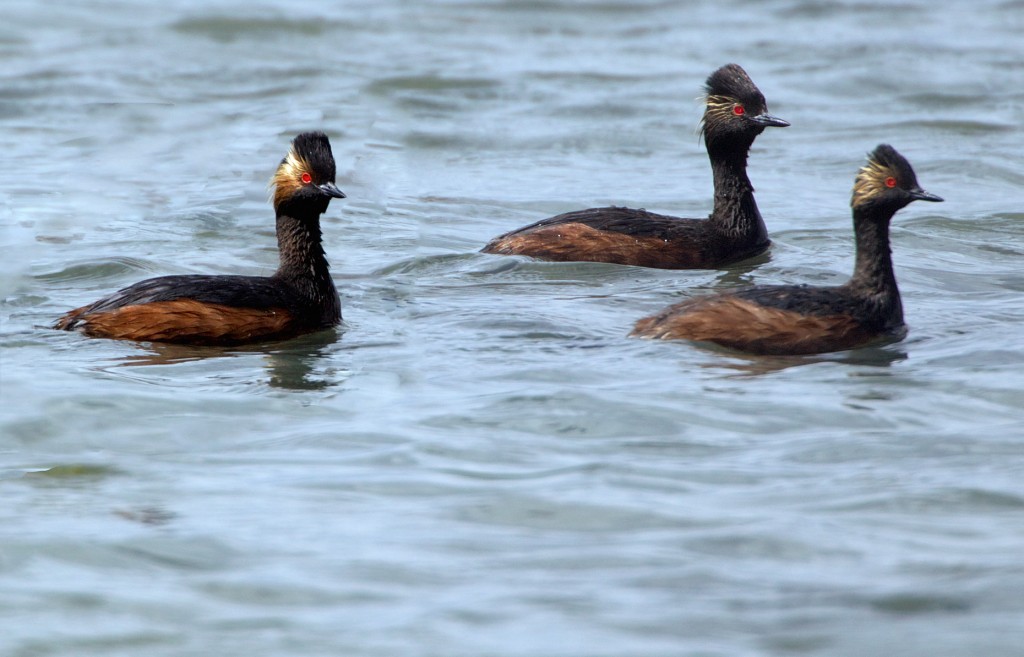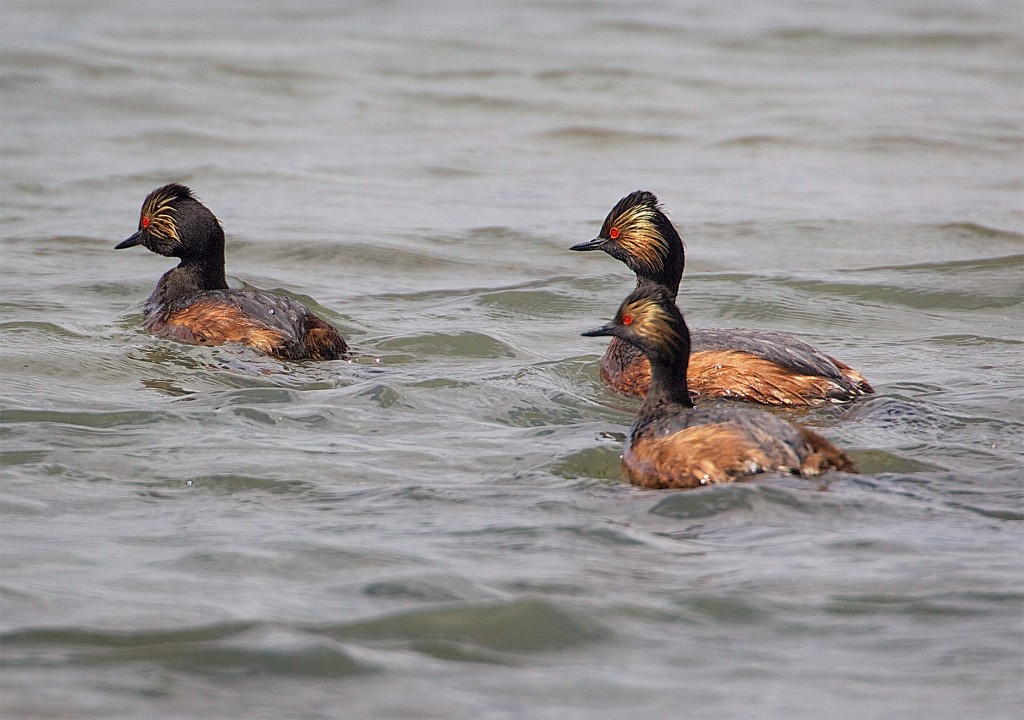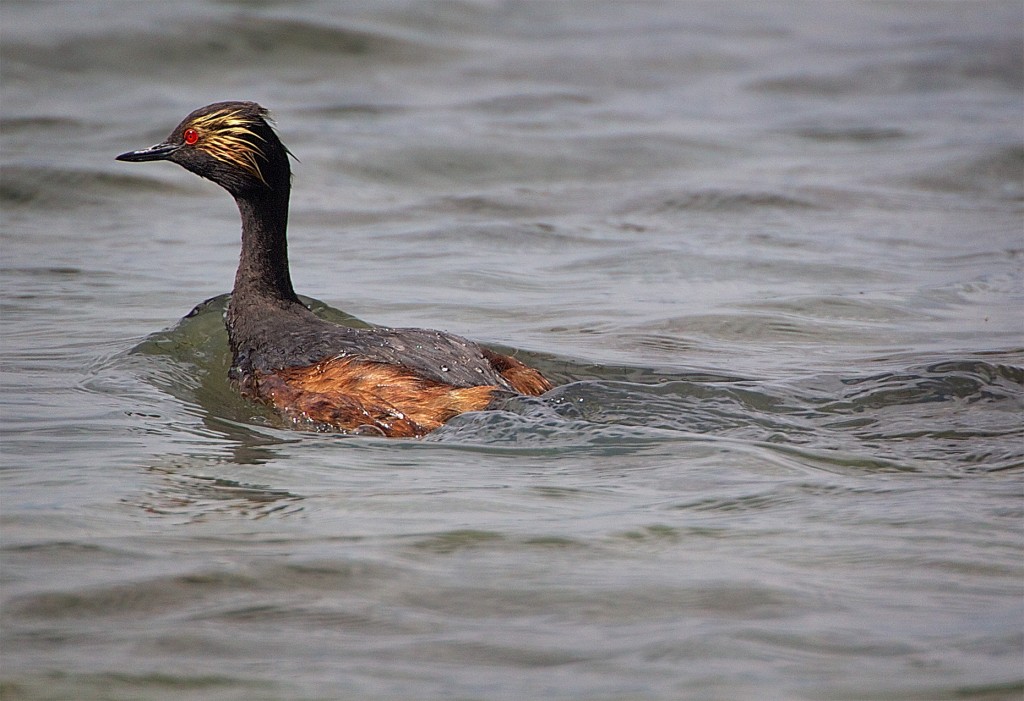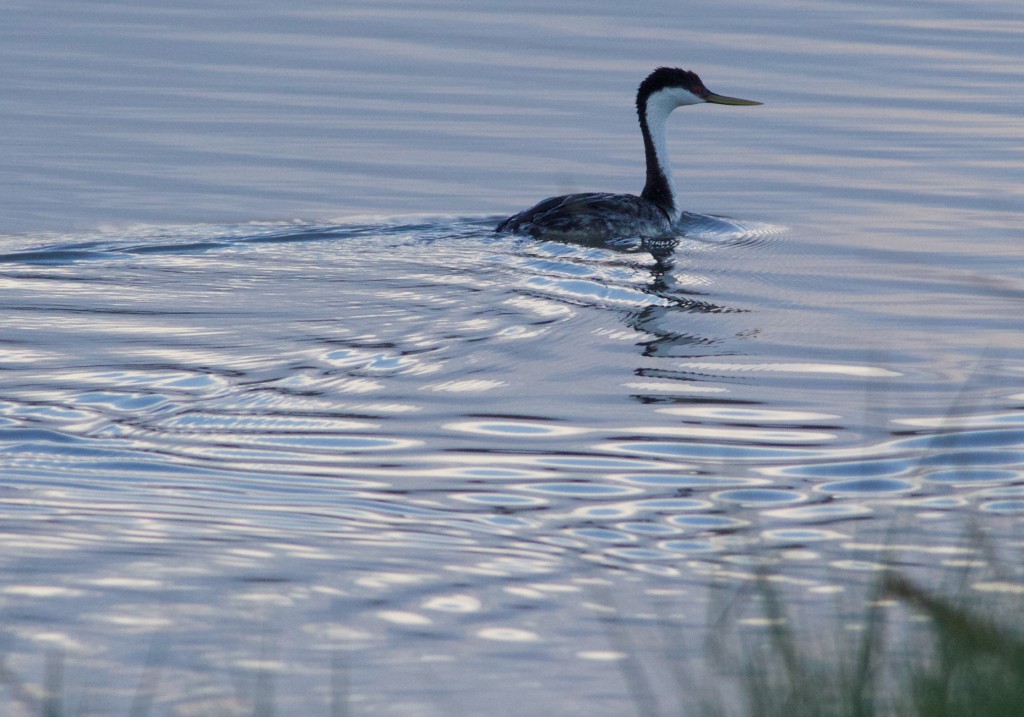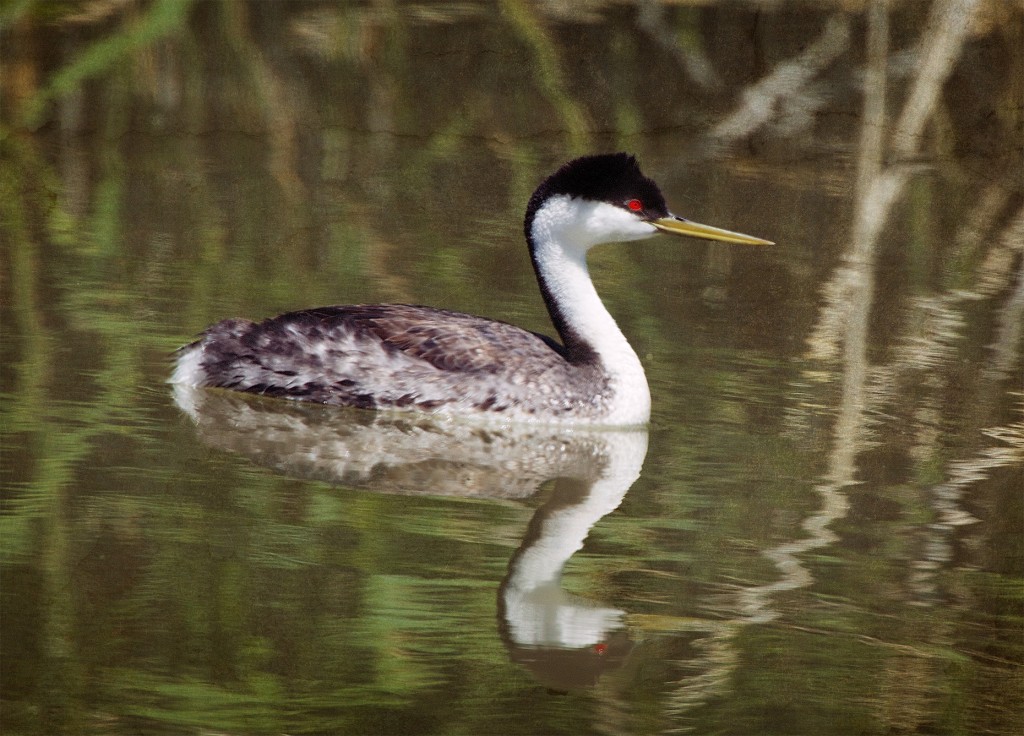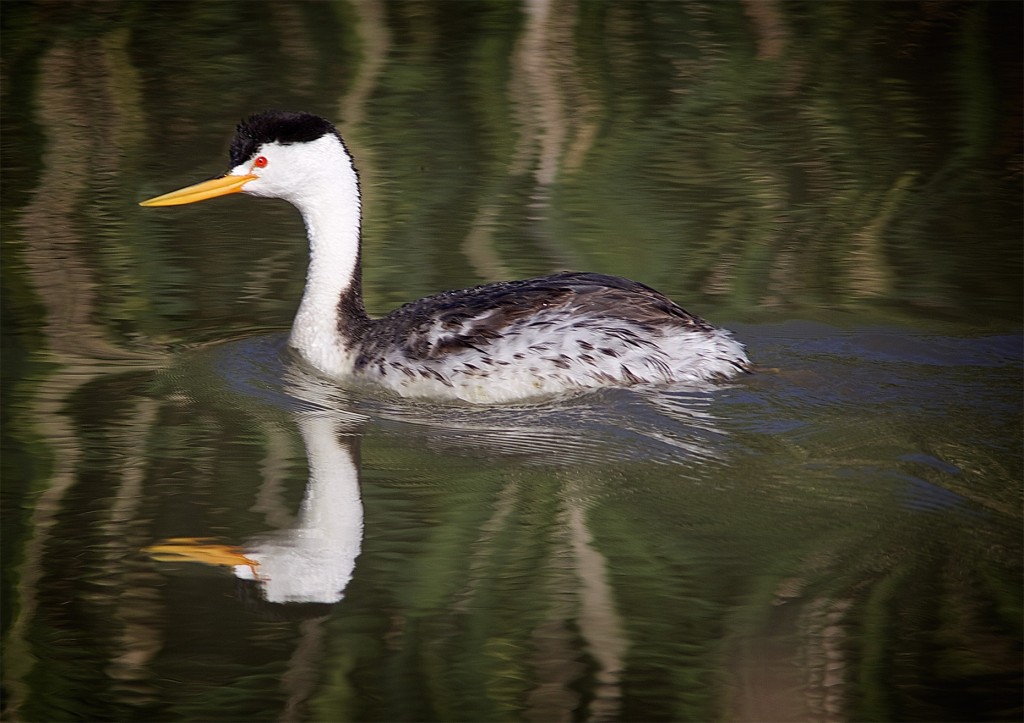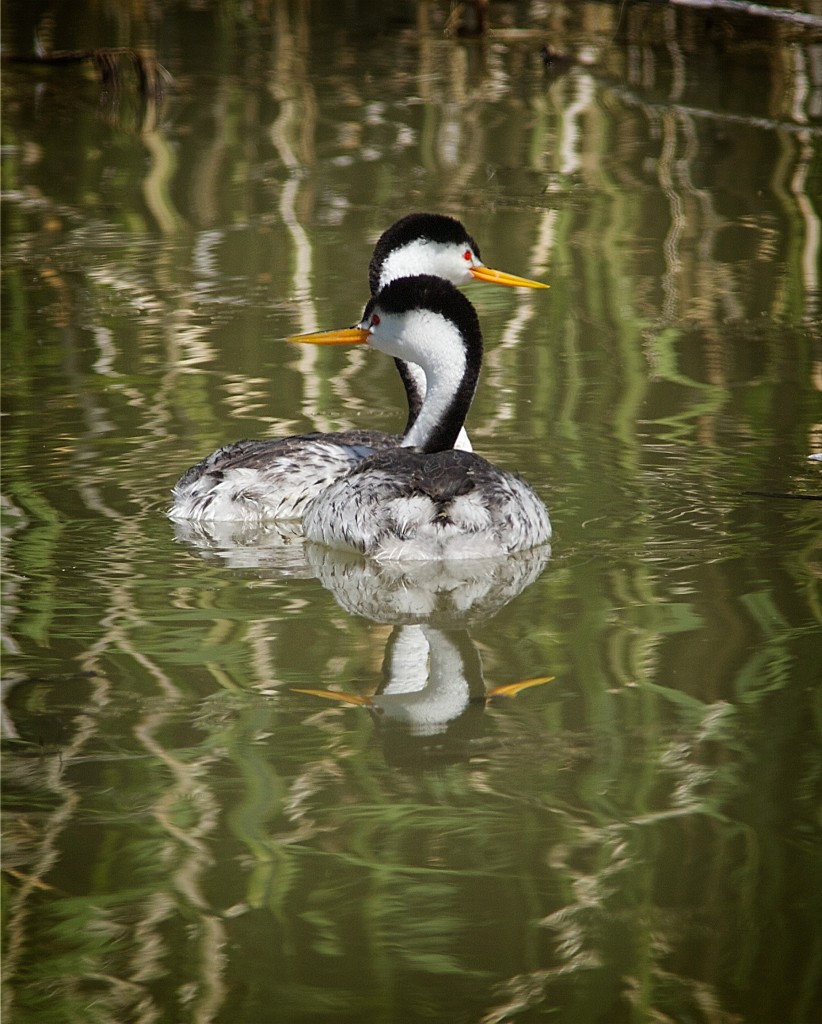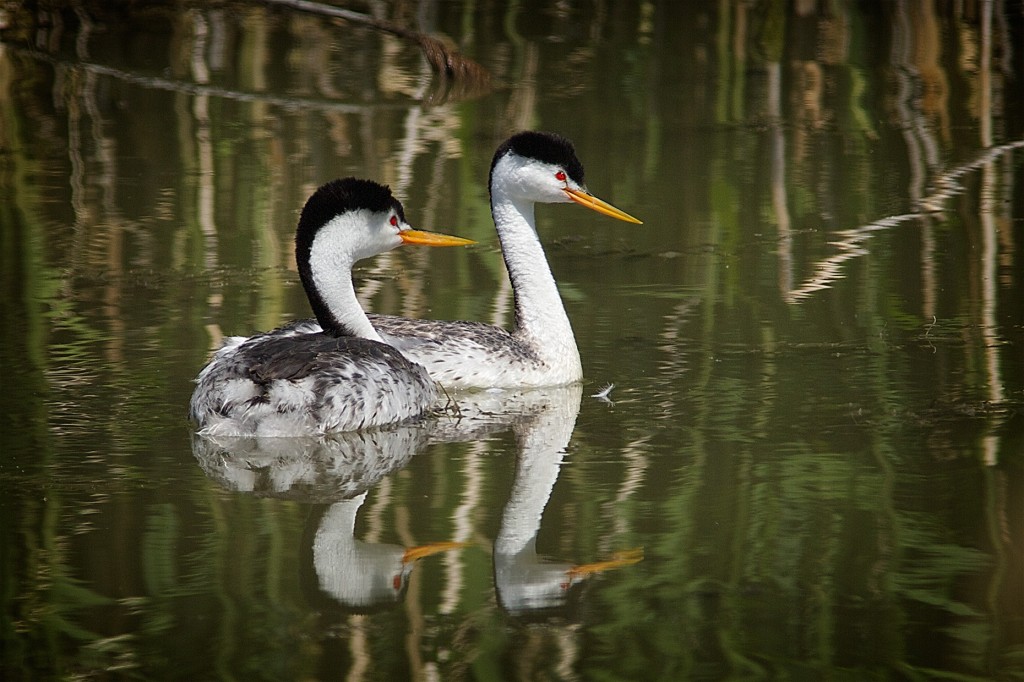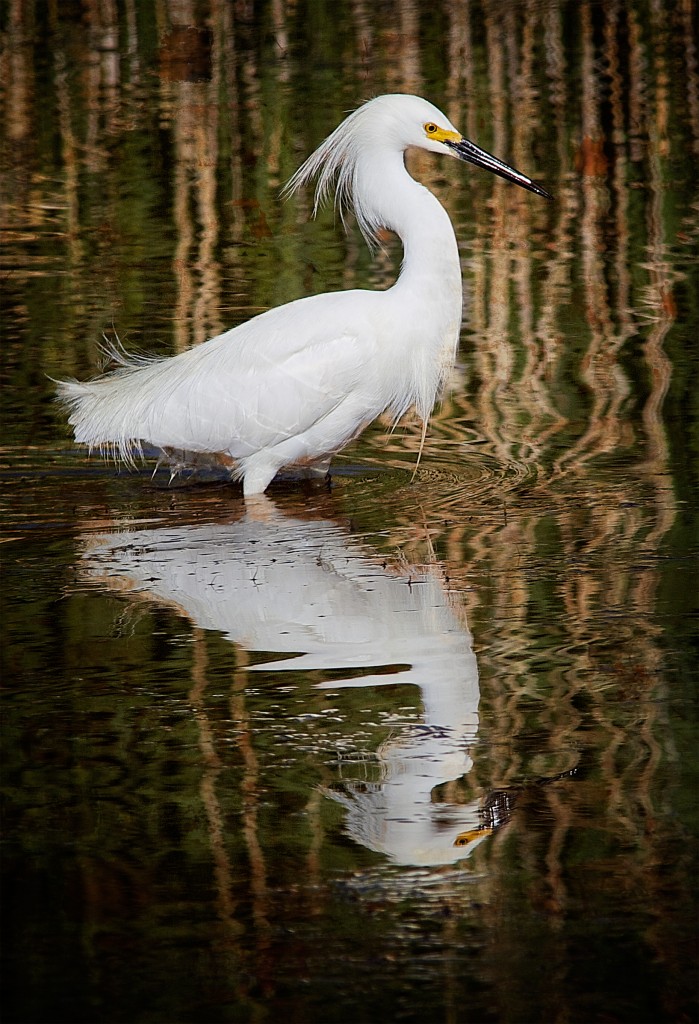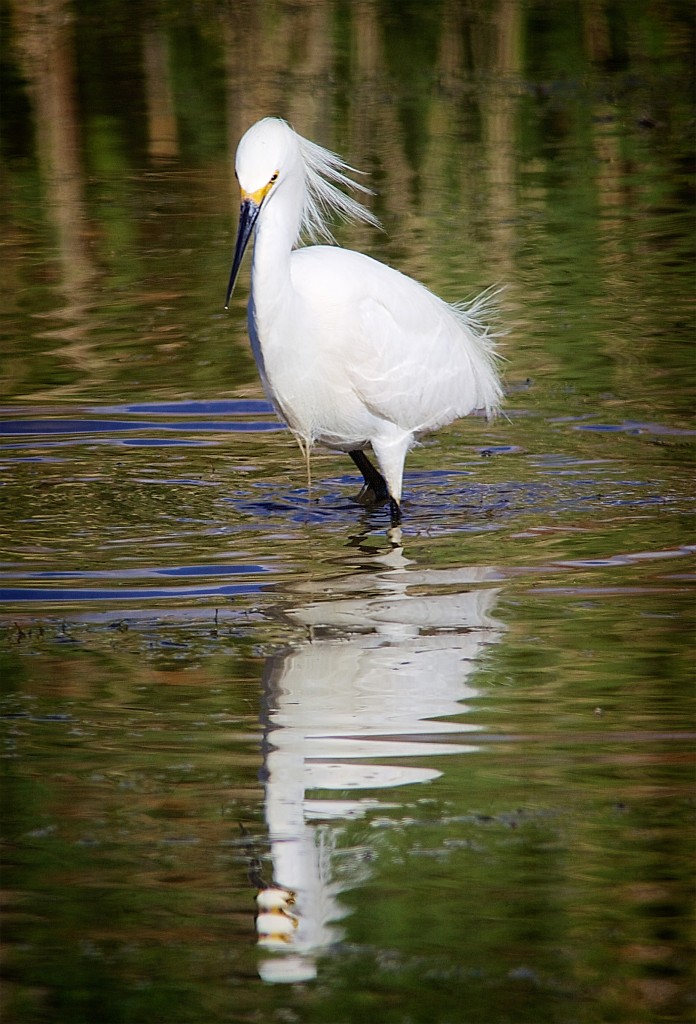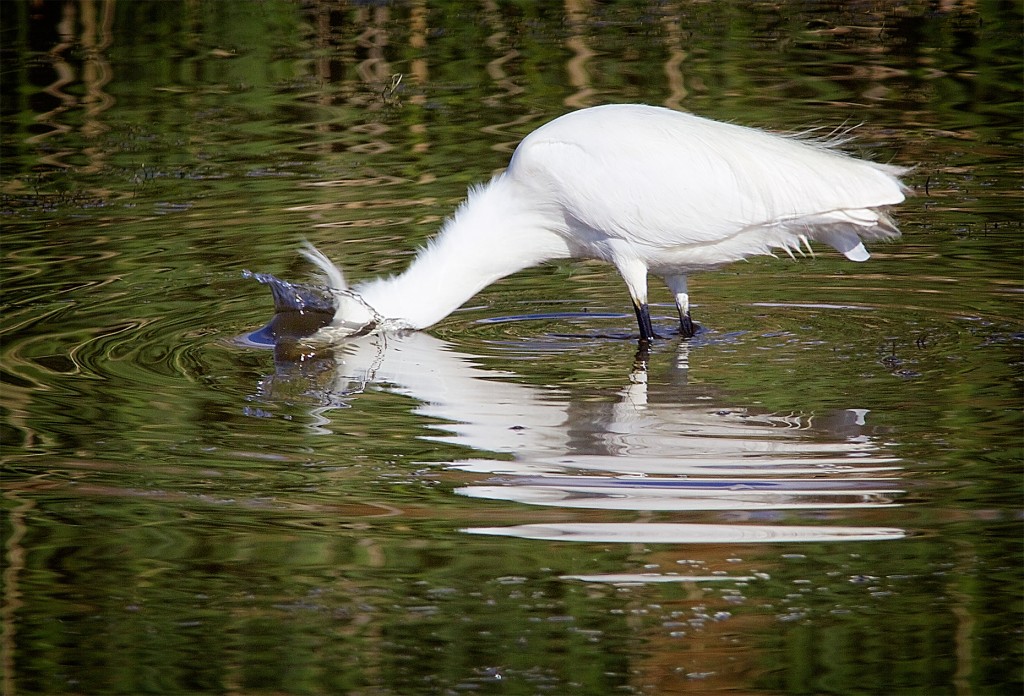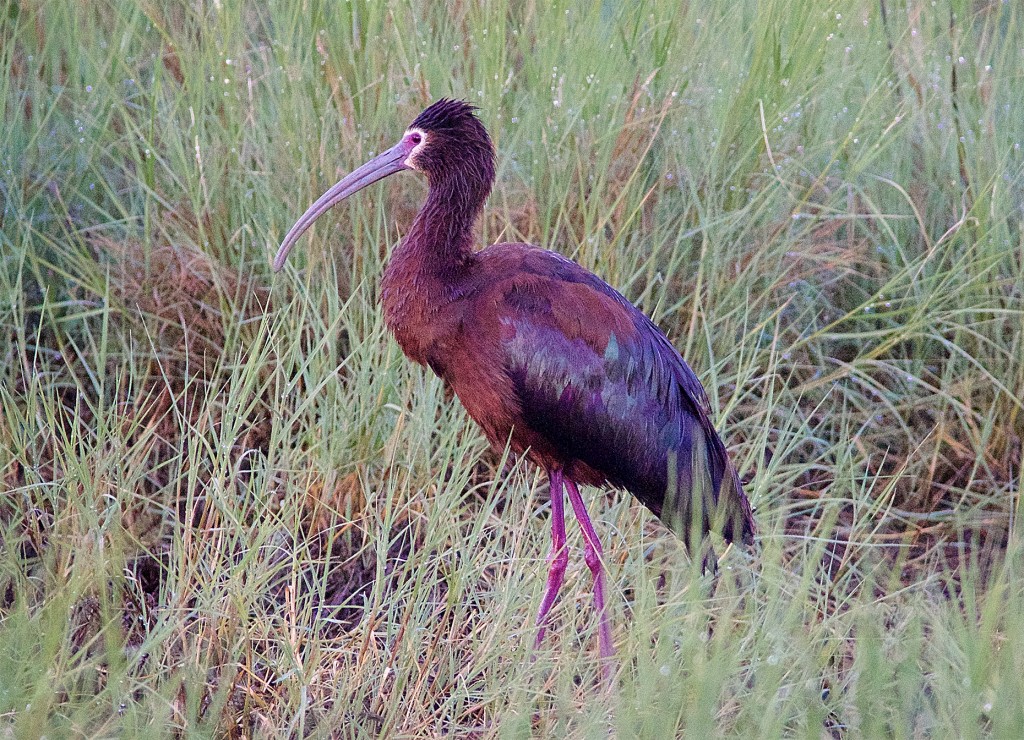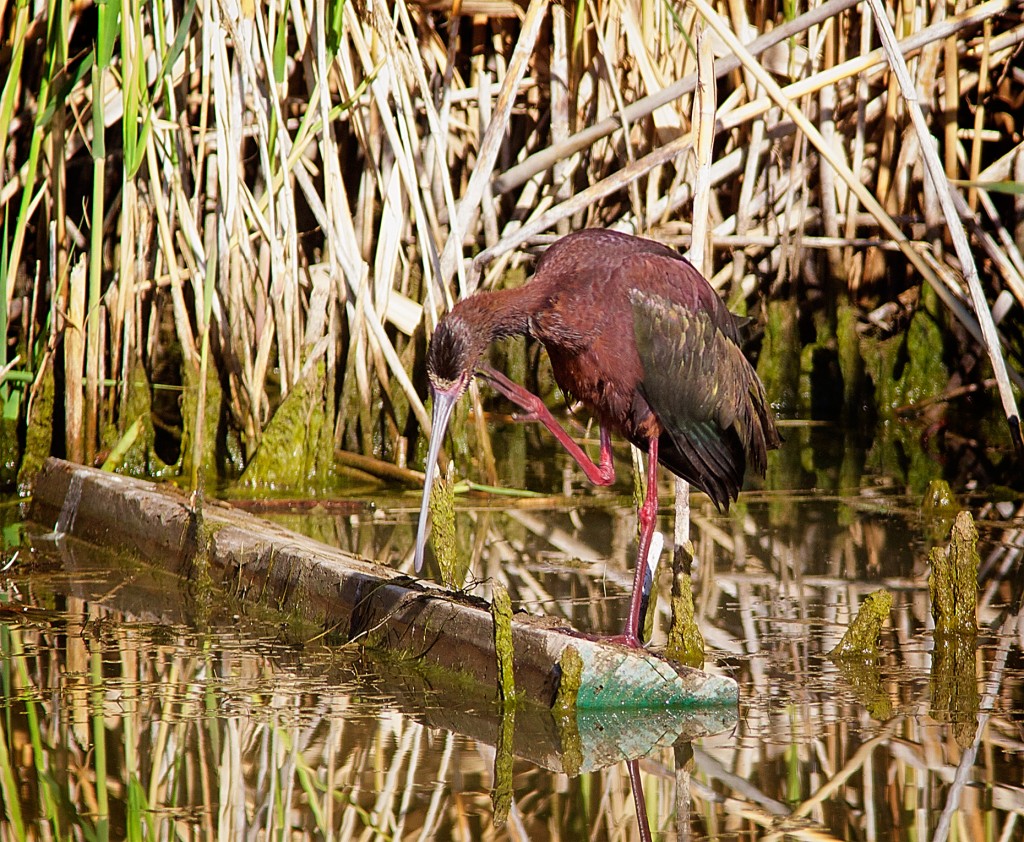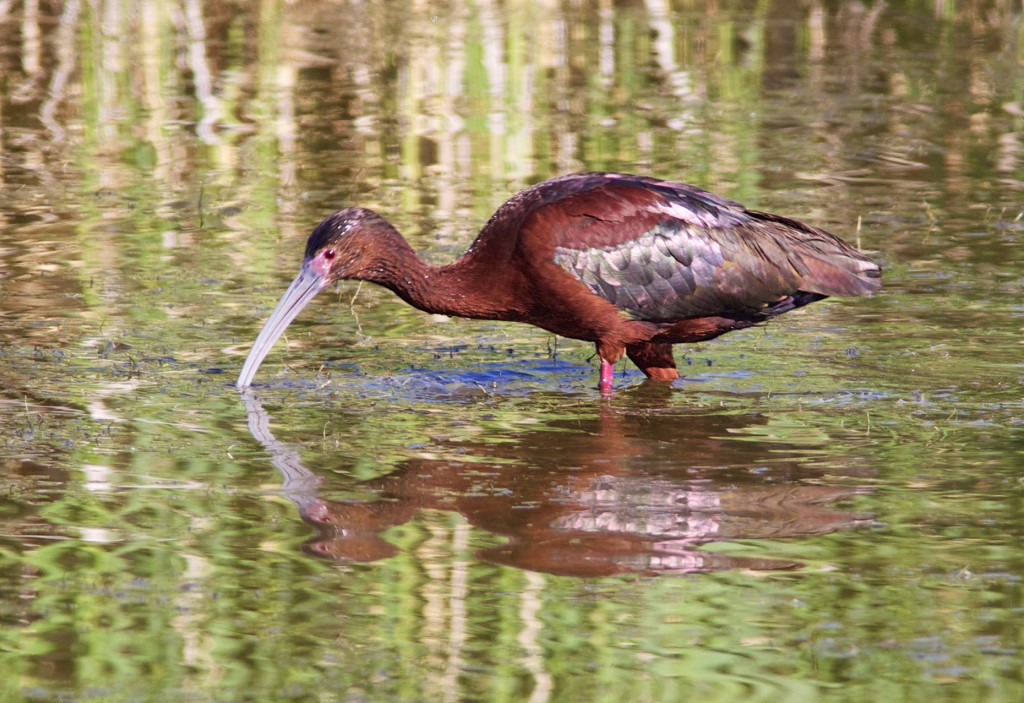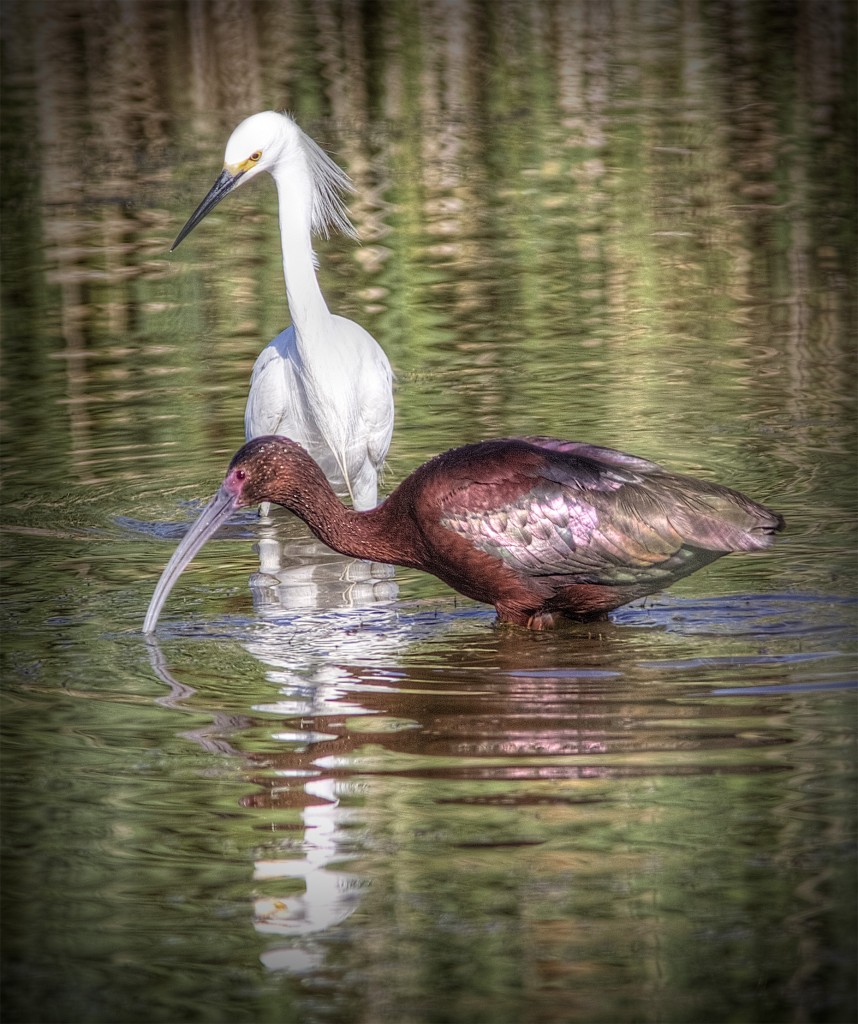When we missed our opportunity to visit Mono Lake, California, this summer I thought I’d also missed my chance to see Eared Grebes in breeding colors this year since Mono Lake is one of their main breeding areas. I didn’t realize that they also breed in Utah’s Great Salt Lake, and Big Bear River is at the north end of the lake.
Although I mostly saw Clark’s Grebes at Big Bear, it was a pleasant surprise when I saw a small flock of Eared Grebes on my second trip around the auto tour.
The first time I saw these bird up close in breeding colors a few years ago I was shocked by the bright red eye and the “ear” plumage which makes the eye stand out, and I’m still fascinated by the distinctive plumage.
I rarely see Eared Grebes, so it’s definitely a treat when I do get a chance to see them, particularly in breeding colors.
I was surprised to learn that they are the most abundant grebe, something I would never have guessed since I commonly see Pied Grebe, Horned Grebe, Red-Necked Grebe, Western Grebe and Clark’s Grebe in the Puget Sound areas but have yet to see an Eared Grebe.
One moment you think you really need to stay focused on a particular area to truly understand a particular phenomena; the next moment you realize you need to go to other places to put things in proper perspective. I’ll need at least another seventy years of retirement to learn all the things I want to learn.

